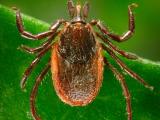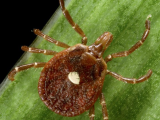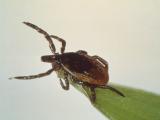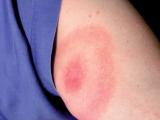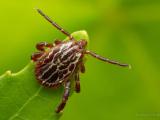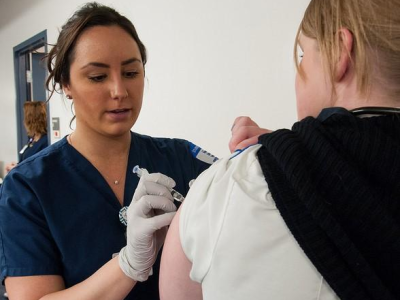A survey conducted in 28 US states found that, despite awareness of Lyme disease and a high prevalence of outdoor activities that raise the risk of exposure to the ticks that carry Lyme bacteria, less than half of respondents took measures to prevent infection, researchers reported yesterday in Open Forum Infectious Diseases.
The online survey, conducted by researchers with Pfizer and John Hopkins Bloomberg School of Public Health, was sent to adults and caregivers of children aged 1 to 17 in 16 jurisdictions with a high incidence of Lyme disease, 10 neighboring states, and selected counties in California and Oregon from October through December 2024. The survey included questions on demographics, outdoor activities and occupation, history of Lyme disease and tick bites, knowledge and risk perception about Lyme disease, time spent in a yard, and use of personal protection measures.
Lyme disease, caused by the Borrelia burgdorferi bacterium, is the most common vector-borne disease in the country, with an estimated 476,000 cases diagnosed and treated each year. The study authors note that while the presence and abundance of infected Ixodes scapularis and Ixodes pacificus ticks (black-legged, or deer ticks) in a geographic location is a prerequisite for Lyme disease risk, the risk of infection is also based on the likelihood of encounters with infected ticks.
"Thus, the primary objective of this study was to describe the population prevalence in the general population of selected US states of LD [Lyme disease] risk behaviors, including the frequency and location of outdoor activities, awareness of LD, and use of prevention measures," they wrote.
Limited understanding of risk exposure
A total of 44,330 adults and 28,389 caregivers responded to the survey. A high percentage of respondents were aware of Lyme disease (range, 88% to 93%), spent time in a yard (adults, 88% to 92%; children, 96% to 98%), or spent recreational time in forests, wooded areas, or areas with tall grass from April through November (adults, 70% to 79%; children, 83% to 84%). Among adults and caregivers from high-incidence states, 16% reported having found a tick on themselves, and 16% reported finding a tick on their children in the past 6 months.
Although most respondents reported they were at low or very low risk for Lyme disease, 25.8% of adults and 27.6% of caregivers in high-incidence states reported that it was a serious or very serious problem in their communities. Similar percentages reported it was common or very common in their community.
Despite the high level of exposure to areas where infected ticks live, only 34% to 40% of adults reported always or almost always using repellents or checking for ticks after spending time in forests, wooded areas, or areas with tall grass, and even less (17% to 23%) reported doing so after spending time in a yard. The findings were similar among caregivers.
Risk for [Lyme disease] is unpredictable, and risk areas are expanding.
The authors suggest the responses could indicate that people have a limited understanding of the types of outdoor activities that put people at risk for Lyme disease and discount the amount of risk associated with the outdoor areas they most frequently encounter, like their yards, which are one of the most common places to encounter ticks. It could also reflect an overestimation of how much time is needed to be at risk.
But with the geographic distribution of Ixodes ticks and the incidence of Lyme disease expanding in the United States, they say more needs to be done to promote prevention efforts.
"Risk for LD is unpredictable, and risk areas are expanding," they concluded. "The high prevalence of outdoor activities among residents of states with a high incidence of LD suggests that more effective strategies and education are needed to prevent LD."

